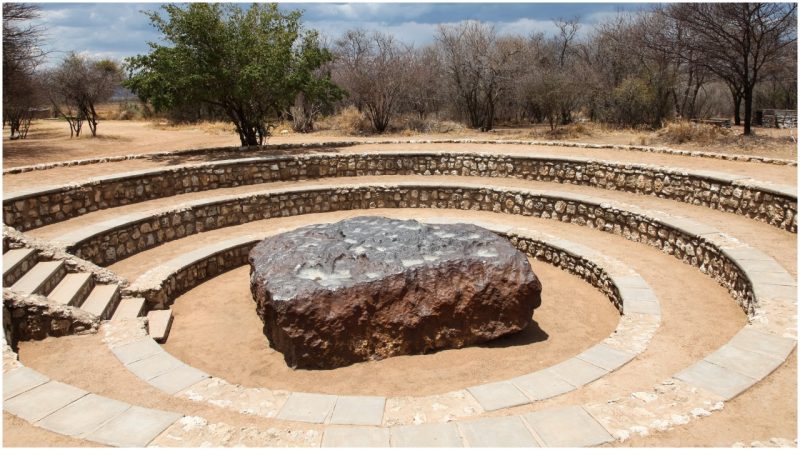Virtually every day, Earth is bombarded with some 100 pounds of meteoric material. As they hit the atmosphere, they quickly burn up as shooting stars. Particles large enough to survive their trip through the atmosphere will fall to the ground and become a meteorite.
Hoba West, or the Hoba meteorite, in Namibia is the largest piece of meteorite in the world, measuring 8.9×8.9×3 feet, with an estimated mass at over 60 tons. It consists mainly of iron (84 percent) and nickel (15 percent) and it is scientifically categorized as an ataxite, a meteorite with a high content of nickel.
Only 5 percent of the total number of meteorite pieces that fall on Earth have a similar composition to the Hoba one. It is one of the most remarkable examples to have been found on the Earth’s surface.
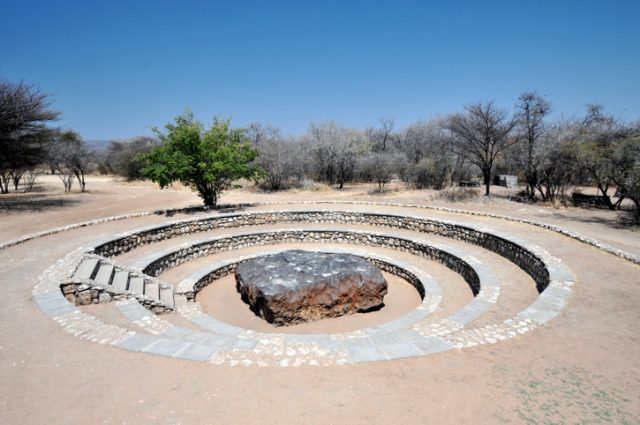
The presence of a rare radioactive nickel isotope helped experts to determine the age of it, estimating at between 190 million and 410 million years, while it’s landing on Earth occurred some 80,000 years ago.
The strangest thing about the Hoba meteorite is that it left no crater. Scientists have suggested that this massive rock might have slowed down as it penetrated the atmosphere, reaching a point of terminal velocity before the impact with the surface.
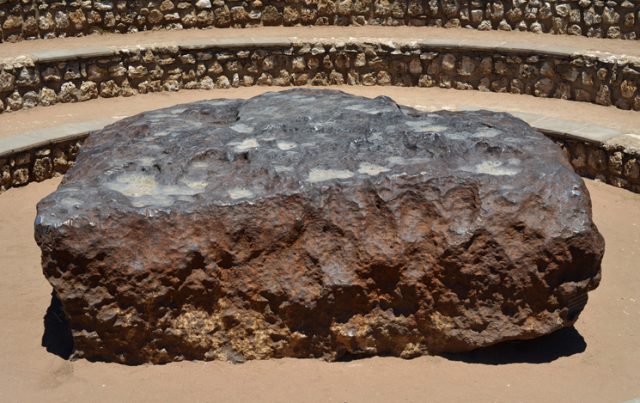
There is also another theory. According to archaeological data and climate models, 100,000 years ago, the southern part of the African continent (including the territory of Namibia) was under a thick sheet of ice.
It is possible that if the Hoba meteorite landed during this period, it made a crater in the ice. In the next 15,000 to 20,000 years, the ice melted and the meteorite was gently deposited on solid ground.
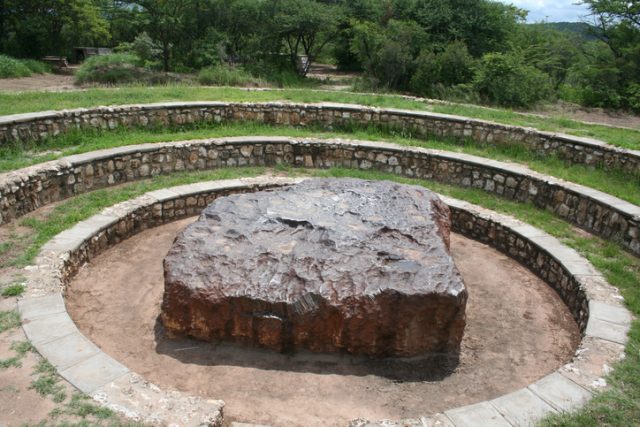
It was discovered accidentally, in 1920, by the farmer Jacobus Hermanus Brits who worked on the Hoba farm, hence the name of the iron rock. In his statement which is still kept at the museum in the city of Grootfontein, Brits described the discovery of the meteorite:
“One winter as I was hunting at the farm Hoba I noticed a strange rock. I sat down on it. Only its upper part was visible. The rock was black, and all around it was calcareous soil. I scratched the rock with my knife and saw there was a shine beneath the surface. I then chiseled off a piece and took it to the SWA Maatskappy in Grootfontein, whose director established it to be a meteorite.”
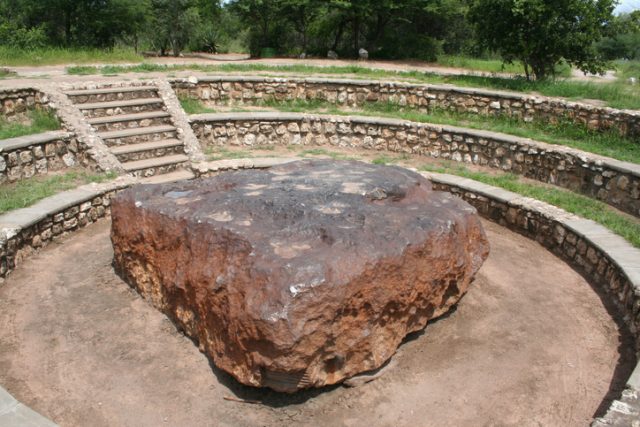
Ever since 1929, when the first scientific analysis on this megalith was made, the meteorite has gained a lot of fame, not only among scientists but also vandals who have inscribed their names on it.
To protect this unique example of iron rock, the local authorities have developed a visitor site around Hoba.
Read another story from us: Biblical Sin City of Sodom Destroyed by Giant Meteor says Archaeologist
Of course, this is not the first place you’ll think of visiting when planning your next great journey, but hey, where else can you see the largest iron rock on Earth if not here, in Namibia?
